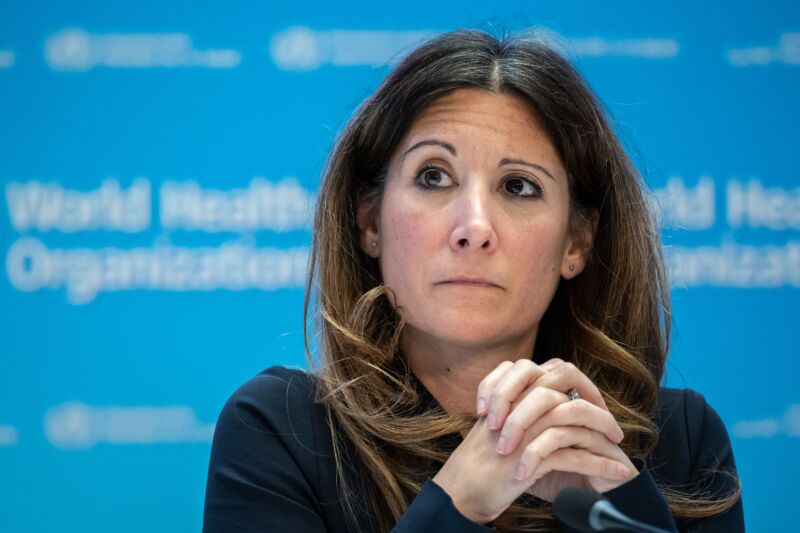
With global attention and anxiety locked onto the latest coronavirus omicron subvariant BA.2.86, health officials and experts are still mostly in the dark about how the highly mutated virus will play out.
At the start of the week, amid a flurry of headlines, researchers had only six genetic sequences of the virus in the public repository GISAID, even though the virus had already spread to at least four countries (Denmark, Israel, UK, and the US). As of the time of publication of this article on Friday, there are still only 10 sequences from five countries (Denmark, Israel, UK, US, and South Africa). According to the World Health Organization, the variant has also appeared in wastewater sampling from Thailand and Switzerland.
As Ars reported Monday, BA.2.86 gained attention for having a large number of mutations compared with BA.2, the omicron subvariant from which it descended. The number of mutations in BA.2.86’s critical spike protein is over 30, rivaling the number seen in the original omicron subvariant, BA.1, which went on to cause a tidal wave of cases and hospitalizations. BA.2.86’s spike mutations appear geared toward evading neutralizing antibody protections built up from past infections and vaccinations. But with such scant and spotty detection, it’s impossible to say whether this variant can outspread its many omicron-subvariant cousins to cause a wave of infection. It’s also still not possible to determine if it can cause more severe disease than other variants. So far, severe disease symptoms have not been reported from the 10 cases—but that is not enough data to draw any conclusions. As the Centers for Disease Control and Prevention reported in a risk assessment Wednesday, it’s “too soon to know” the impact of BA.2.86 on transmission and disease severity.
The slow trickle of data on BA.2.86 is part of a larger, dramatic plummet in COVID-19 surveillance and reporting in general. Last October, WHO’s technical lead for COVID-19, Maria Van Kerkhove, noted, “The number of sequences that the world and our expert networks are evaluating has dropped by more than 90 percent since the start of the year. That limits our ability to really track each of these [omicron subvariants].”
The genetic surveillance landscape has eroded further since then. In a press conference Friday morning, Van Kerkhnove highlighted that even basic reporting is failing. Of 234 countries and territories, WHO is now only getting case count data from 103 countries. Only 54 countries are reporting deaths, just 19 are reporting hospitalization rates, and 17 are reporting data on intensive care utilization.
“We don’t have good visibility on the impact of COVID-19 around the world,” she said.
Critical surveillance
The lack of data makes it impossible to track trends and health impacts—potentially those from new variants—and get people the care they need, let alone adequately monitor for new variants, Van Kerkhove stressed.
While uncertainty lingers over what impact BA.2.86 will have (if any), with such sparse surveillance, health officials will have less chance to catch early rises in cases, severe disease, and deaths if a worst-case-scenario variant arises.
Although countries did impressive amounts of work to set up surveillance and reporting systems during the emergency phase of the pandemic, those critical tools are precipitously declining. Yet, the virus continues to circulate in all countries, and the little data we have shows increases in hospitalizations. In the US, new hospitalization admissions per week have nearly doubled since July 1, now up to over 12,600 in the week of August 12, according to CDC data.
“It is really important that surveillance continues,” Van Kerkhove said, “and this is on the shoulders of governments right now.” Those surveillance and reporting systems need to remain.
For now, the WHO has designated BA.2.86 as a “variant under monitoring (VUM),” which in the past was a designation only given to variants that have early signals of being able to outcompete other variants circulating. With so little data on BA.2.86, that’s not the case for this omicron subvariant. However, WHO altered the definition of VUM to accommodate BA.2.86. The designation now can include a variant that “has an unusually large number of antigenic mutations but with very few sequences and/or it is not possible to estimate its relative growth advantage.”
With so many mutations and so much concern about them, there’s also been some clamoring for BA.2.86 to have its own Greek letter, marking it beyond omicron. But, according to WHO’s current system, only variants designated “variants of concern (VOC)” are given Greek letters. To attain VOC status, BA.2.86 would have to meet at least one concerning criteria: clearly cause more severe disease; change epidemiology trends in a way that could imperil health care resources; or significantly evade vaccine protection from severe disease.
A technical advisory group for WHO will conduct a risk assessment of BA.2.86 as data accumulates, from which they’ll determine if a designation change is warranted.
https://arstechnica.com/?p=1963498

